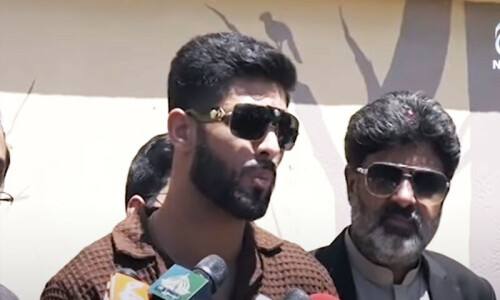As the din rises over British filmmaker Leslee Udwin’s documentary on the December 2012 Delhi gang-rape, this much needs to be pointed out: most critics of India’s Daughter have not seen it.
The film was scheduled to be premiered simultaneously in seven countries (including on BBC and India’s NDTV 24x7) on March 8, which is celebrated as International Women’s Day. The release in India, at least, has been stopped by the courts for now.
In the run-up to the scheduled telecast, Udwin and her Indian co-producer, prominent journalist Dibang, held a preview of the film in Delhi on Tuesday evening.
This is not an article on the investigation into whether the required legal permissions had been obtained and adhered to. This is an article about the content of a film that Indians may not get to see.
Also read: Delhi rape victim's father urges viewing of documentary
The hour-long documentary deals with the fatal gang-rape of a 23-year-old physiotherapy intern in Delhi by six men on a moving bus on the night of December 16, 2012, and the subsequent protests across India that drew international attention.
Through the voices of the many people involved in various ways in this real-life tragedy – the young lady’s parents, her tutor, lawyers, activists and one of the convicted rapists – Udwin seeks to highlight the social mindsets that lead to rape and unabashed victim blaming.
Interview with the rapist
Nothing makes this point more acutely than one unrepentant convicted rapist on death row criticising the dead woman.
The element that distinguishes India’s Daughter from the unrelenting media coverage this case has received is a lengthy interview it features with one of the rapists, Mukesh Singh, lodged in Delhi’s high-security Tihar Jail.
For those who have followed the case closely, Singh’s claims of innocence will not be news. The revelation lies in the manner in which he supplements his denial of guilt with a stinging indictment of the victim’s character and behaviour, claiming that she brought the attack upon herself.
Also read: Delhi gang rape convict blames victim: 'A decent girl won't roam around at night'
Singh’s most chilling comment, though, is the one that throws light on how well-informed he is about the ongoing debate in India on capital punishment, especially for rapists.
In words that seem borrowed from activists quoted in the media, Singh says that while rapists would earlier have let their victims off alive on the assumption that a woman would be too ashamed to report the matter to the police, the situation has changed. Rapists are now more likely to murder their victims, he claims.
The purpose of India’s Daughter would be served if Singh’s interview compels us to examine our collective conscience for two reasons:
- To understand where our society has gone so wrong that a man such as this one emerged from our midst;
- For the everydayness of Singh’s views.
Shockingly commonplace views
The truth is that his beliefs about rape victims mirror the beliefs expressed by numerous ordinary men and women across India – and in varying degrees in the rest of the world; of politicians and other prominent figures (from spiritual guru Asaram Bapu, to Haryana chief minister Manohar Lal Khattar) who have derided rape victims in various ways.
Two lawyers who appeared for the defence in this case also make extremely regressive remarks in the documentary.
Lawyer AP Singh confirms to the filmmaker that he stands by this statement made in an earlier interview:
“If my daughter or sister engaged in pre-marital activities and disgraced herself and allowed herself to lose face and character by doing such things, I would most certainly take this sort of sister or daughter to my farmhouse, and in front of my entire family, I would put petrol on her and set her alight.”
Defence lawyer ML Sharma contributes this:
“You are talking about man and woman as friends. Sorry, that doesn’t have any place in our society. We have the best culture. In our culture, there is no place for a woman.”
Also read: 'Rape the girl, blame the girl'
It is these social prejudices that Indians were protesting at India Gate and other parts of the country in the winter of 2012-’13, and this is what we continue to protest.
Some members of the public are burning with indignation at this blatant victim-blaming, many asking why Singh in particular was given a platform to air such opinions.
Tone of concern
These protestors would be well advised to watch the documentary in its entirety. Nowhere in the film has Udwin glorified these misogynists. In fact, the tone of her film is one of concern about the rampant trivialisation of women in society, its causes and possible solutions.
It is also worth pointing out that while the documentary is on the side of women victims of rape, space has also been given to those who want credible solutions rather than mob justice.
Former policeman and now social activist Amod Kanth, for instance, discusses the circumstances that breed juvenile criminals. He speaks in the context of the under-18-year-old in the December 2012 case.
Another voice of sanity comes from Justice (retired) Leila Seth who was on the three-member Justice Verma Committee constituted after the gangrape to recommend amendments to Indian laws relating to sexual violence against women. Seth speaks in the documentary about the need for education to improve attitudes towards women.
Udwin has also been careful not to indulge in the condescending finger-pointing towards India that has marked a considerable part of the Western media’s coverage of India’s anti-rape protests. She ends India’s Daughter with worldwide statistics, highlighting violence against women, from Australia to the US.
In all these respects then, this is a balanced documentary that has traversed tricky territory with sensitivity.
India’s Daughter comes across for the most part as an offer of solidarity, not a sermon to India, and a tribute to those who took to the streets to protest against the December 2012 Delhi gang-rape.
However, there are a couple of jarring notes that merit mention.
First is the film’s title. For a person whose good intentions shine through both her documentary and her media interactions, it is surprising that Udwin chose a title that in effect furthers mindsets that seek to restrict “our mothers, sisters and daughters” in the guise of offering protection from violence; that view women only in terms of their relationships with men and not as individuals.
The really troublesome aspect of India’s Daughter, though, is the inclusion of Oxford historian Maria Misra as an India expert. Misra is so obviously an outsider viewing India’s anti-rape movement from a distance, she sticks out as an oddity. Nothing emphasises this more than the stray factual errors in her quotes (for instance, she describes the Verma Committee members as all being former judges, which is not the case).
Would a documentary on First World events be allowed to get away with a lackadaisical attitude towards even the smallest of facts?
Moving storytelling
These criticisms notwithstanding, India’s Daughter still needs to be seen in India.
Though much of what is said in the film is familiar ground for us, the power of Udwin’s storytelling lies in the fact that she still manages to move those of us who know this case in minute detail.
Rapist Mukesh Singh’s matter-of-fact drone is like a bucket of ice-cold water being thrown on our heads on a winter’s day.
This is a film worth seeing for the revulsion he invites as he describes what was done to a hapless woman and her male companion on that December night; for the unashamed hatred towards women displayed by those defence lawyers; for the sobriety of those activists who have been fighting unrelentingly for women’s rights for years and refuse to be sidetracked by populist demands; and for the constant reminder of the bravery of those citizens who took to the streets to say “enough is enough” – “and showed the world the way”, as Udwin puts it.
Also read: A murderer and rapist’s views reflect those of many in India
Journalism makes cynics of many of us. Yet, it is hard not to be touched once again by the liberalism of that father and mother who did not allow their own strained circumstances to become an excuse to hold their daughter back.
When they speak of their girl with pride even now.
When they relive her tragedy for our sakes.
When the mother slams those who blame women for rape.
When the father reminds us that his murdered daughter’s name means “light … a light that I wish will dispel whatever darkness there is in this world”, it is hard not to be reduced to tears. I confess I was.
Related:
- Angry mob lynches rape accused to death in India
- Two Pakistani men accused of raping domestic worker in South Africa
- What you need to know about Pakistan's new Anti-Rape Bill
- Gang-rape victim lives life of isolation after viral video
- The trivialization of rape in Pakistan
This article was originally published on Scroll.in












































